- HLUBUČKOVÁ, Barbora, NOVÁK, Petr, ed. Eating Healthy with Fitrecipes. Prague: Verdon Capite, [2017]. ISBN 978-80-906763-0-5.
- ZLATOHLÁVEK, Lukáš. Clinical dietetics and nutrition. Second expanded edition. Prague: Current media, [2019]. Medicus. ISBN 978-80-88129-44-8.
- healthline.com - 28 Easy and Healthy Meals for Breakfast, Lunch, and Dinner. Healthline. Lizzie Streit, MS, RDN, LD
- medicalnewstoday.com - Healthy recipes for weight loss. Medical News Today. Katherine Marengo LDN, R.D.
What foods are suitable for weight loss? Simple recipes and tips
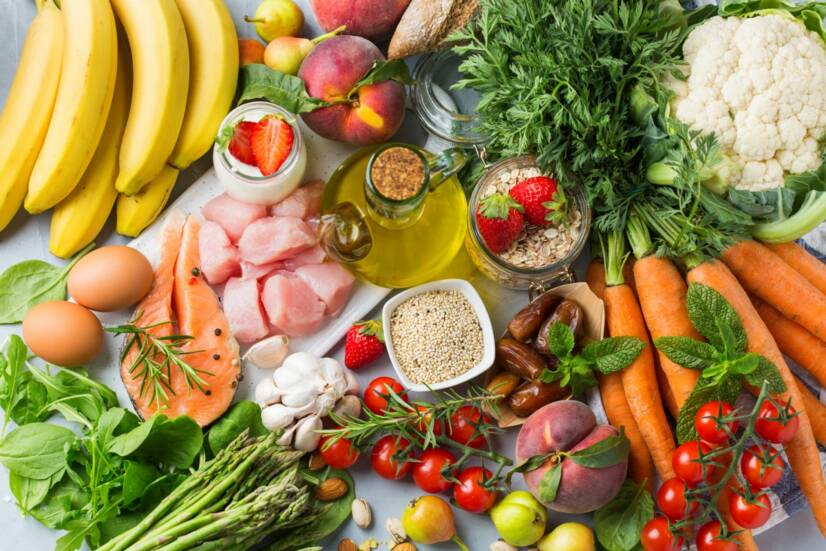
Dieting for weight loss does not have to be complicated. Even simple meals and recipes can be nutritious, healthy and low-calorie at the same time. What foods are suitable for weight loss and what to avoid?
Article content
Weight loss is a common part of weight management and lifestyle. However, weight loss does not have to be difficult - neither financially nor culinarily. In particular, a nutritious regular diet is necessary for sustainable weight loss without health risks and yo-yo effect.
Tips for valuable and low-calorie meals, simple recipes, calorie deficit and many other interesting information can be found in the article.
The basic principle of weight loss
The key to burning excess kilograms is a calorie deficit.
A caloric deficit is a condition in which the body gives out more energy than it takes in. Through diet, we take in energy that is necessary for the physiological functioning of the body. Conversely, through basal metabolism and added physical activity, we give out energy on a daily basis.
Through diet, we supply the body with energy (calculated in calories or joules) and necessary nutrients.
Basal metabolism is the energy our body "burns" for the proper functioning of the body's internal systems and systems. It is determined by age, sex, height, weight, genetic factors and long-term lifestyle.
Metabolism: what is it, what are its functions and how to support it?
Another energy expenditure is the activities we perform during the day - work, walking, sports, cleaning and other activities. Together with the basal metabolism, this makes up the total energy expenditure of the body.
Calculation of the approximate total energy expenditure is possible using internet-verified calculators after entering the necessary data (age, height, etc.).
Calculation of energy intake is possible based on the composition and calories on food or more simply by using calorie tables in the form of a mobile app or website. Caution - this is an approximate number. It is not advisable to become a slave to numbers and mathematics.
How to calculate your basal metabolic rate requirements? Our BMR - Basal Metabolic Rate Calculator will help you.
It is useful to know your approximate daily energy intake, but it is not advisable to count individual calories and become a slave to food. It is important to have a positive relationship with food and yourself.
Tips for healthy weight loss that work
You can find countless articles and advice about weight loss on the internet.
However, it is important to be able to filter out false and misleading information.
These mainly concern crash diets and detoxes for fast, effortless weight loss. In most cases, this is marketing to sell weight loss products. It is important to remember that without moderate dieting and lifestyle modification, lasting results will not occur.
Beware of diets that exclude any of the essential macronutrients from the diet.
The body should receive all vitamins, minerals and essential nutrients - protein, carbohydrates and fats.
For more interesting information, see our article:
Essential nutrients in the human diet: what are proteins, sugars, fats?
Fast and drastic diets are a risk:
- Excessive fatigue and exhaustion
- General weakness
- Reduced immunity and defenses
- Irritability, anxiety, bad mood
- Vitamin and mineral deficiencies
- Disruption of the body's internal systems
- Yo-yo effect and unsustainable results
- Disharmony and slowing of metabolism
The basis of sustainable weight loss is a regular moderately modified diet, sufficient drinking, regular physical activity and a positive relationship with healthy foods.
Protein intake , an essential building block, is important for maintaining/building muscle mass and a great satiating effect without feeling hungry after eating.
Proven tips and advice for healthy weight loss:
- Regular nutritionally balanced diet
- Eat slowly, without gobbling food
- Moderate calorie deficit of 10-15%
- Avoiding excessive intake of simple sugars
- Avoiding excessive fat intake
- Adequate dietary protein intake
- Adequate drinking of clean water
- Sufficient physical activity
- Regular quality sleep and recovery
What to have for breakfast?
Although it is said that breakfast is the staple of the day, this is not entirely true.
If one does not feel well in the morning, one does not need to eat a heavy breakfast or large portions. Even a smaller snack will suffice. On the other hand, one who is hungry in the morning can enjoy breakfast.
Breakfast the sweet way
- Protein yoghurt with oatmeal and a few nuts
- Oat/rice protein porridge topped with chia seeds and cinnamon
- White yoghurt mixed with lump cottage cheese, fresh fruit and muesli
- White yoghurt skyr with fresh fruit and muesli/oatmeal
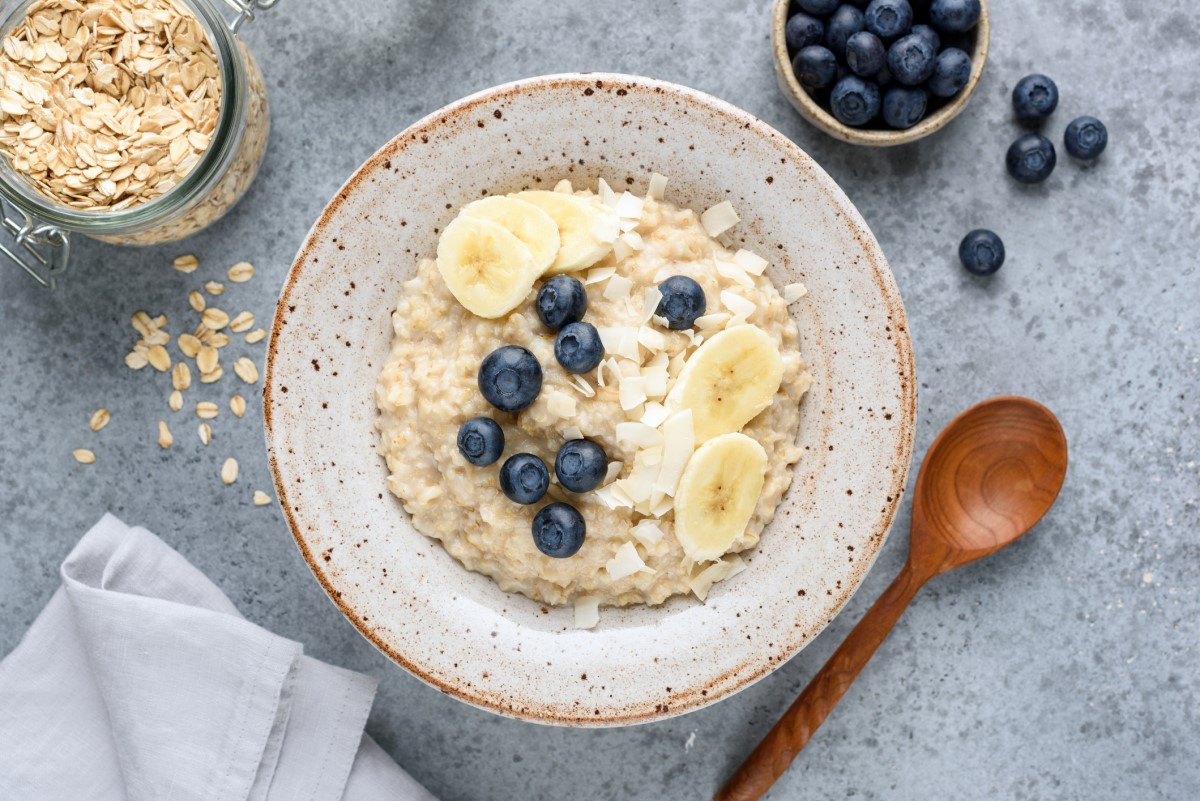
Savoury breakfast
- Egg omelette with roasted mushrooms and fresh vegetables
- Ox eye with toasted wholemeal and vegetables
- Toasted wholemeal bread with ½ avocado, rocket and tomatoes
- Caprese salad: mozzarella with tomatoes and black olives
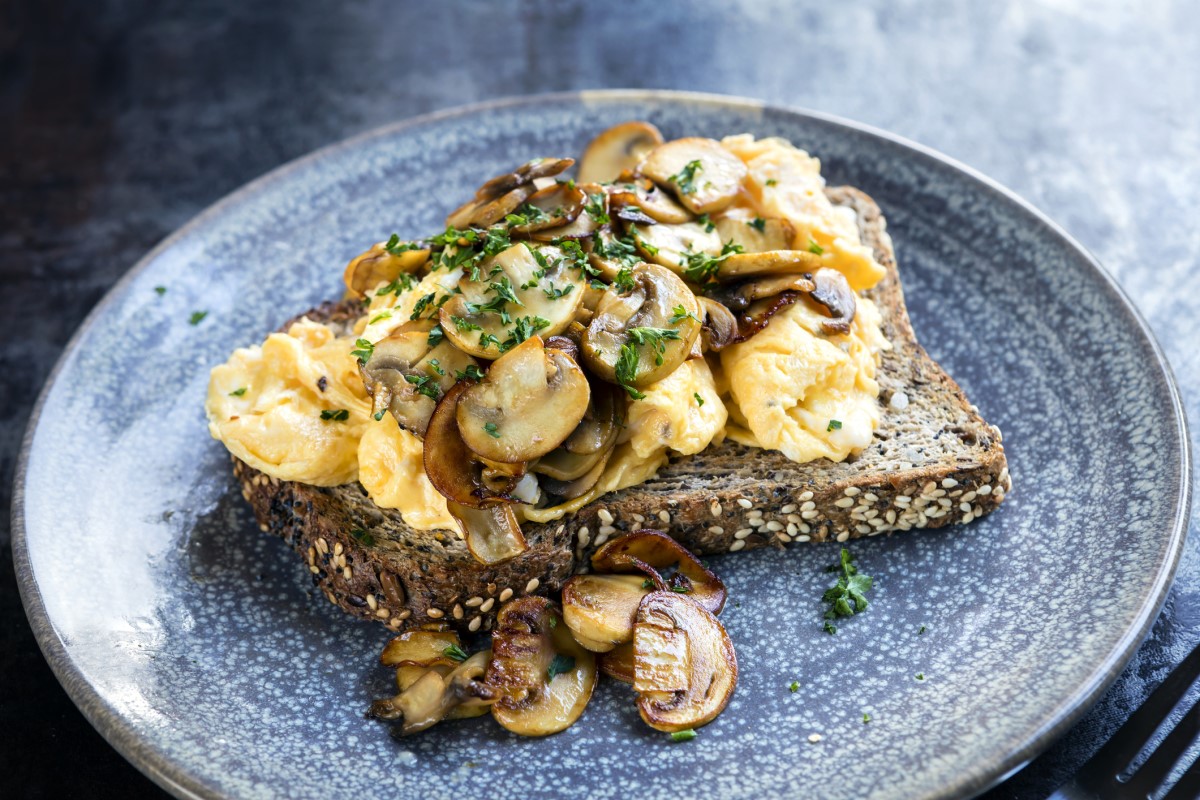
What to avoid at breakfast?
- Too bulky portions the size of a main meal
- Excessive intake of simple sugars without fibre
- Beware of sugary low-protein and high-calorie yoghurts with high sugar content
- Too many nuts (just for decoration)
- Liquid calories for breakfast (caffe latte, sweet carbonated drink...)
What to have for snack/lunch?
A small, quick snack during the day is important for a constant feeling of satiety and to replenish energy before exercise (work or sport).
- Protein bar/yoghurt
- Flavoured protein drink (protein powder)
- Cottage cheese with vegetables
- Fruit (apple, banana, pear, berries...)
- Mozzarella with tomatoes and rocket
- Vegetable sticks (carrot, celery, cucumber...)
I. Main dish with meat: simple recipe
Whole wheat tortilla filled with lean chicken, fresh vegetables and low-calorie yogurt dressing.
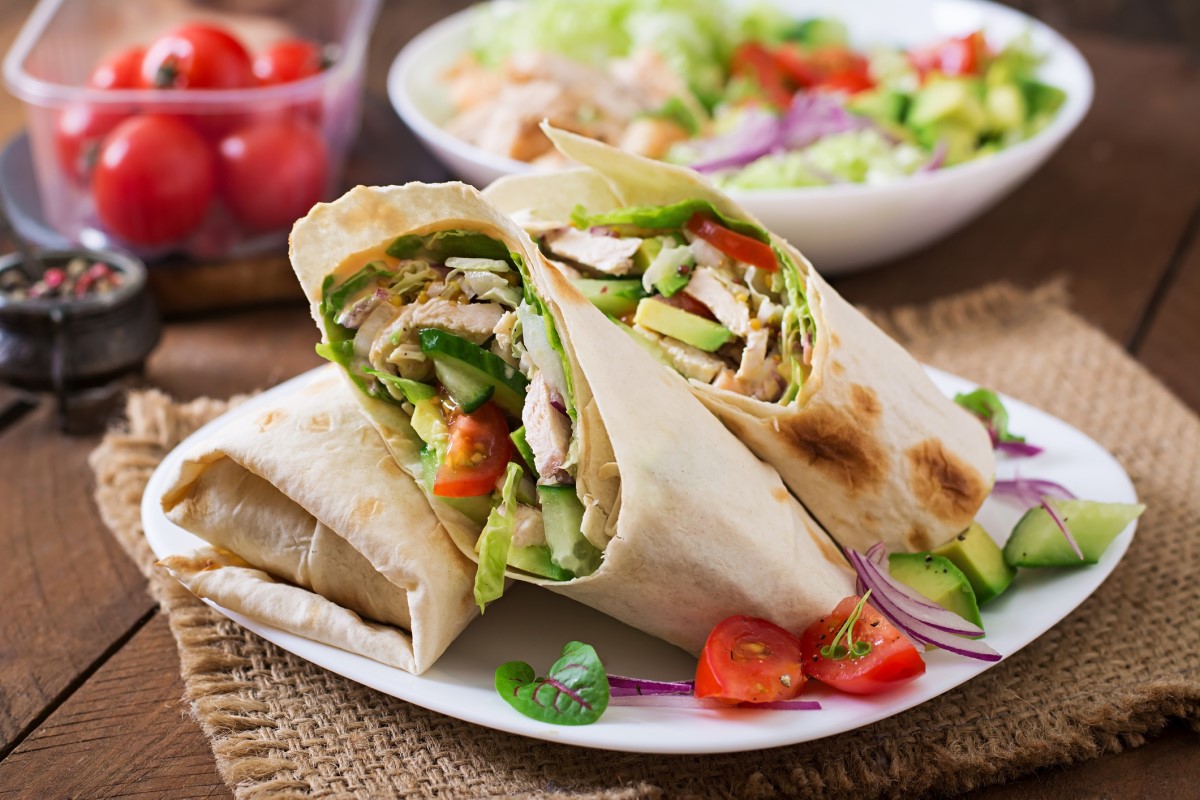
We will need:
- Boneless chicken breast
- Peppers, tomatoes and lettuce
- Whole wheat tortilla
- White unflavored yogurt
- Salt, black pepper and ground paprika
Procedure:
- Cut the lean chicken breasts into small cubes.
- Season the meat with salt, black pepper and ground pepper and sear in a frying pan.
- Prepare the yoghurt dressing by mixing white low-calorie yoghurt, ground paprika, salt and pepper.
- Cut the fresh vegetables into small pieces and place them on ½ open tortillas.
- Add the cubes of grilled meat and season with the yogurt dressing.
- Roll up the tortilla and fold over at one end. Serve.
II. Main dish with meat: simple recipe
Homemade low-calorie chicken strips with vegetable salad
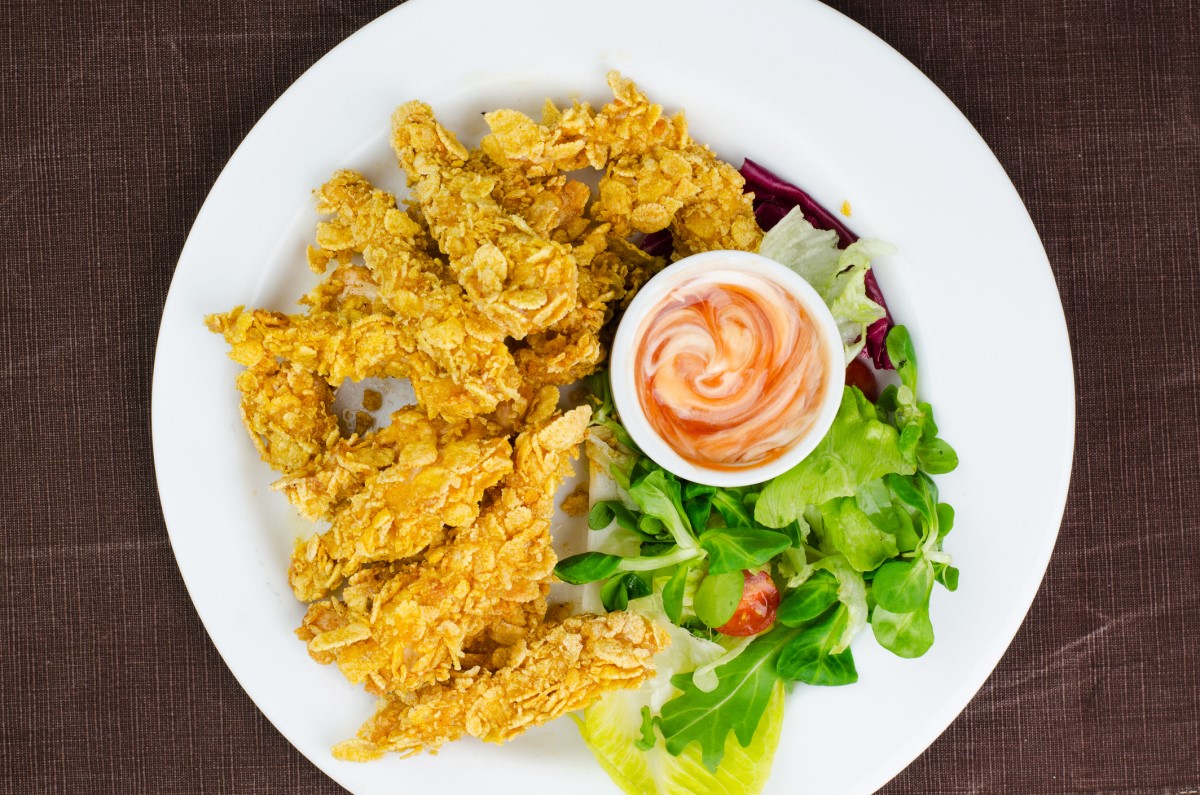
We will need:
- Boneless chicken breasts
- Crushed cornflakes
- White unflavored yogurt
- Salt, pepper, ground paprika, minced garlic
- Fresh vegetables (lettuce, leeks, tomatoes)
Procedure:
- Turn the oven on to 200 degrees on the hot setting.
- Place the chicken breasts on the stove at 200°C and season with salt, black pepper, ground paprika and finely pressed garlic.
- Prepare a separate bowl of white yogurt and a bowl of crushed cornflakes.
- Coat the breaded chicken slices first in the white yogurt and then in the cornflakes.
- Place the chicken strips on a baking sheet and bake in the oven for about 20 minutes.
- Chop the vegetables and serve with the homemade chicken strips.
III. Vegetarian main dish: simple recipe
Poke bowl with quinoa, roasted chickpeas, tofu and fresh vegetables
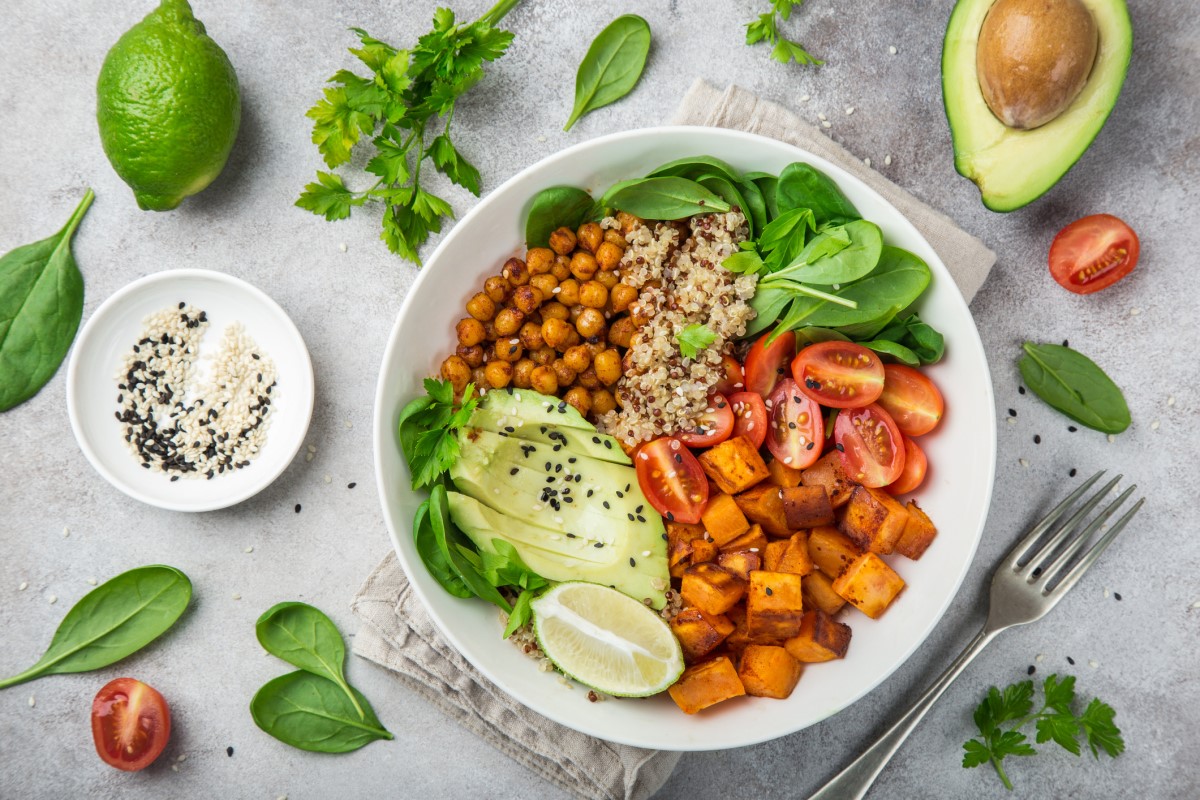
We will need:
- Quinoa
- Chickpeas
- Smoked tofu
- Fresh vegetables (lettuce, tomatoes, leeks)
- ½ avocado
- Soy sauce, salt, black pepper and ground pepper
Procedure:
- Cook the quinoa in a 1:2 ratio with water over low heat for about 15 minutes.
- Drain the chickpeas from the brine and gently fry them in a pan. Season with ground paprika.
- Cut the smoked tofu into cubes and add to the chickpeas in the pan. Fry gently. Season with salt and pepper.
- Cut the fresh vegetables and avocado into small pieces.
- Place the cooked quinoa in the bottom of the dish and top with the roasted chickpeas, tofu and vegetable salad.
- Season to taste with soy sauce to combine the ingredients and serve.
For the main dish, watch out for...
- Small portion of protein in one serving
- Too large portions and overeating
- Insufficient portions and then eating snacks
- High-calorie dressings and sauces
- Eating fast food and gorging on unprocessed foods
What foods to avoid when losing weight?
As part of weight loss, it is advisable to avoid highly processed foods with excessive amounts of simple sugars and fats.
These include fast food, excessively fatty foods, salty snacks, sweets, candies and sugary fizzy drinks.
Watch out for liquid calories contained in, for example, coffee-flavoured lattes, carbonated sweetened drinks, juices or milkshakes.
If you 'indulge' in snacking, it's no problem and you don't have to feel guilty. The main thing is to have a positive relationship with food and yourself.
What we eat regularly, frequently and over the long term is important in weight loss.
It is advisable to exclude them:
- Excessive intake of fatty, greasy foods
- Excessive intake of simple sugars
- Intake of liquid calories in beverages
- Excessive intake of carbohydrate side dishes
- Fast eating and incomplete processing of food in the mouth
- Irregular eating and subsequent overeating
Need to maintain:
- Moderate calorie deficit
- Adequate drinking (plain water, mineral water, tea)
- Adequate dietary protein intake
- Adequate intake of vegetables in the diet
- Achievable progressive goals on the way to the dream weight
Read also our articles:
- How to lose weight in a healthy way? Diet for weight loss. Beware of pointless diets
- How to lose weight at home and healthily? Proper diet, exercise and supplements
- Healthy weight loss for women? Proper diet and exercise. Truths and myths about weight loss
- What effect does a healthy Mediterranean diet have on a person's health and weight loss?
- High intensity interval training - HIIT. What effect does it have on our body?
- Create your own training plan.
- What are the nutritional/nutritional values of meals, foods?
Interesting resources










